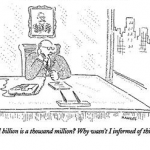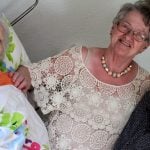If you can walk, you can dance. Or even if you can’t. 
Kids with special needs are as likely to love dancing as any other children. Kids are kids. Whether they have disabilities or not, they are still unself-conscious, flexible and energetic.
Thinking and moving are indistinguishable to them: when they get an idea, they RUN. Their bodies work out problems their minds don’t even realize they have. And in dance, with its structure, grace, harmony and rhythm, they can explore ideas and concepts they don’t have the language or awareness to successfully navigate with words or numbers.
But our kids don’t often get the chance to act on their imaginations. They don’t often get the opportunity to move their ideas through time and space, using their bodies as their medium for learning. They have packed schedules: physiotherapy, OT and communication development (if they are lucky); or plenty of nothing (if they are like the vast majority of disabled kids in India).
One of the great things about disability is the chance it offers us to break free of the restrictions that apply to everyone else. It seems counter-intuitive, but sometimes being marginalized, being left out of the system is actually a gift. When Anand and Cathleen were small, they dragged off to school every day – the same school which asked us to withdraw Moy Moy because they couldn’t “handle” her needs. It wasn’t fair, they insisted. “How come Moy Moy gets to have fun every day and we have to go to school?”
Most schools and most countries make it very clear how unimportant the creative arts are in a child’s education. Governments cut the arts first when funding is scarce and it’s ok to cancel music, drama and dance if more time is needed for math or science. Physical education is basically mass PT and anyone drawn to non-academic pursuits is considered an impractical time-waster.
We don’t expect the same things from kids with disability as we do from typical kids. This is totally wrong and totally ridiculous but also totally awesome. So, while no one is looking, let’s pack their days with dance and music and art. Let’s give them every possible avenue of creative expression and see which one sets their feet moving, their hearts alight, their spirits soaring.
[easy-tweet tweet=”If you can walk, you can dance. Or even if you can’t.” user=”JoChopra” hashtags=”disability” url=”https://latikaroy.org/jo/2017/04/15/can-walk-can-dance/”]
Listen to Ava, a “little person” who says dancing makes her feel BIG:
We hate exclusion. We’ll fight it until everyone everywhere can choose who they want to be, what they want to do, where they want to go. But while we’re waiting, let’s celebrate our freedom too: from expectations, competition, rigid identities. Let’s rejoice at not being slaves to the CBSE and the ICSE. Let’s give thanks that we don’t have to squash our kids into boxes and churn them out of Class 12 like assembly-line automatons.
 OUR schools and centres can be filled with music. We can use paint and clay and weaving as part of our core curriculum. Our kids can explore emotions and new ideas through drama. No one will ever try to stop us from doing physiotherapy through dance or language development through song.
OUR schools and centres can be filled with music. We can use paint and clay and weaving as part of our core curriculum. Our kids can explore emotions and new ideas through drama. No one will ever try to stop us from doing physiotherapy through dance or language development through song.
Do you ever stop to think how lucky we are? Free!

Care to dance?



Well said…exactly why I enjoyed teaching in special schools so much . Your piece makes me want to join you all again at Latika Roy for another round of story telling, puppet making and performing, painting with squishy balls and crayoning over myriad items to make a rubbing…..For starters! Love to all those kids and teachers I got to know 3 years ago with Anne and Sue…
We all miss you, Sara! I’ll pass on your greetings and good wishes. Love!